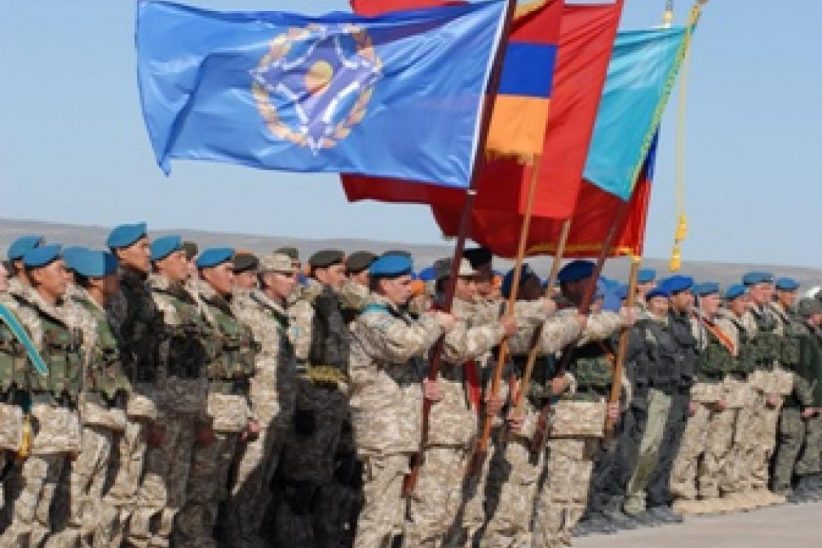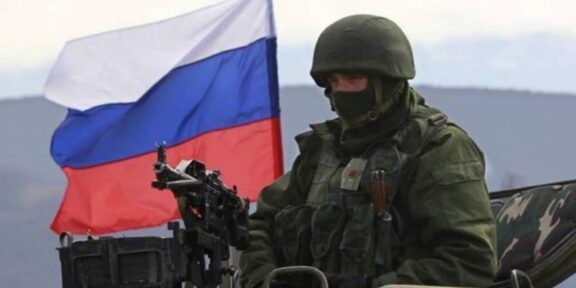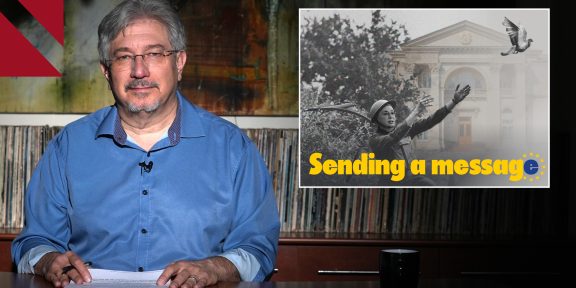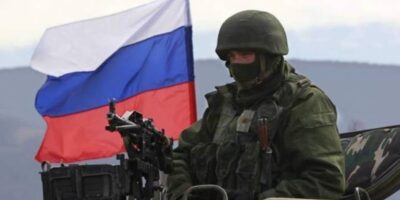 By Albert Hayrapetyan
By Albert Hayrapetyan
CSTO failed to follow the successful itinerary of the NATO because of different priorities, interests and civilizations of its member states. It has not been yet engaged in any serious international conflict management. Russia needs the CSTO to show that it is not “a lone wolf” vis-à-vis the USA and its NATO allies. Regardless of being ineffective, incoherent and tottering, CSTO is still a legal mechanism for its member states to be allied with Russia and be covered by its nuclear shield. Last but not least, with his criticism Pashinyan might have helped the former government to play the “trump card” of very diverse internal constituencies and to succeed in getting the most possible concessions from Russia. Bearing it in mind, it is at least unfair and unnecessary to criticize the current Prime Minister of Armenia for his seeming tergiversations.
Understanding the raison d’être of the CSTO
North Atlantic Treaty Organization (NATO) was established to counterbalance the influence of the Soviet Union and to curb its possible expansion. Notably, this interpretation is acknowledged by the Alliance as being one of the reasons behind its establishment. The collapse of the Soviet Union, however, rendered a huge vacuum making the NATO the only viable security system on Earth. The newly independent states, supposedly with an intention to counterbalance the NATO, signed the Tashkent Treaty or Collective Security Treaty which was later renamed Collective Security Treaty Organization (CSTO). The prima facie mission of the alliance is to guarantee security for its member states, which the CSTO is not fully able to do. Therefore, a legitimate question may arise: why it was founded and why it is still alive?
Stephen Walt mentioned the key reasons behind the persistence of the alliances. Those reasons are: preserving credibility, domestic politics and elite manipulation, the impact of institutionalization and shared identities and hegemonic leadership. Let us discuss the applicability of all the mentioned reasons in case of the CSTO.
The first reason, i.e. credibility preserving, has little in common with CSTO. Walt argued that during the cold war each of the two superpowers – the USA and the Soviet Union were eager to defend all their allies, including the marginal ones to reaffirm their credibility in the eyes of more crucial allies. However, in modern-day international politics the overall pattern is changed and as Stephen Walt adamantly argued. “we are now living in the unipolar world”.
The argument of institutionalization seems to be prudent and solid. In short, the essence of the argument is that the employees of the international organizations, concerned about their professional career, are reluctant to see the organization dissolved. The League of Nations was quite institutionalized with staff members increased four-fold from 1920 to 1931. However, it did not prevent the dissolution of the League. Walt further noted that even when the mission of the alliances is accomplished, is not expedient to dissolve them since it would be very costly to establish the institutions anew. While referring to this argument ,Walt brings the example of the NATO stressing the importance of its military bases. However, CSTO has no military bases deployed. In a nutshell, this argument is not strong enough to be the primary reason behind the persistence of the alliances in general, and CSTO in particular.
“Self-interested groups” argument is about the lobbyists who are keen to preserve the alliances even when it they become redundant or obsolete. Indeed, ethnic Armenians, Kyrgyzs and Tajiks living in Russia do care about the security and the well-being of their co-ethnics living in the homeland. However, on the example of Armenia one may argue that the alliance does little to prevent the attacks of Azerbaijanis against it. On the other hand, according to the theory of omnibalancing, the Third World leaders normally choose balances in order entrench their own power even if it is against the national interests of countries that they run. This is not the case of the CSTO either. Noticeably, since independence, Armenia has never changed its foreign policy vector markedly unlike Mengitsu Haile Mariam of Ethiopia and Anvar Sadat of Egypt exemplified by David. Therefore, neither the argument of self-interested groups, nor David’s theory of omnibalancing can explain the persistence of the CSTO.
Among the possible reasons mentioned by Walt, the “shared identities” argument is probably the weakest one to explain the persistence of the CSTO. If one were to consider the CSTO member states according to political scientist Samuel Huntington’s “Clash of Civilizations” approach, Russia and Belarus, for example, belong to the Orthodox world, while Kazakhstan, Kyrgyzstan and Tajikistan are part of the Muslim world. Azerbaijan is also a part of Muslim civilization and shares a lot of cultural similarities with the Central Asian fellow Turkic states. Therefore, if the large-scale war between Armenia and Azerbaijan resumes, probably no soldier from Kazakhstan and Kyrgyzstan would fight for the sake of Armenia. On the other hand, it is expected that a huge flow of volunteers from CSTO member Turkic countries are likely to fight for Azerbaijan against Armenia. In contrast, in NATO, not counting Albania and Turkey, all other member states belong to the Western Christian civilization and share cultural similarities.
And finally, “hegemonic leadership” argument is probably the only one mentioned by Walt that might explain the persistence of the CSTO. Obviously, Russia, the unequivocal leader of the CSTO, makes alignment more attractive with tangible inducements. For instance, the CSTO enables its member states to purchase weapons and armaments from Russia with preferential prices. Also it is difficult to underestimate the efficacy of joint military drills. Furthermore, CSTO is still a legal mechanism for its Member States to be allied with Russia and be covered by its nuclear shield. In addition, leaving CSTO might probably jeopardize their relations with Russia.
The Importance of NATO’s Article 5
In most cases the formal documents have little to do with the existing political reality. A salient example is The Constitution of the Soviet Union, akin to the ones of numerous authoritarian and even tyrannical states, leaves an impression that the Union was an empire of democracy, human rights and rule of law. Nevertheless, the Charter of the CSTO and the North Atlantic Treaty are essential to grasp the true nature of both organizations. The article 5 of North Atlantic Treaty (hereinafter Treaty) is a vivid evidence of Unus pro omnibus, omnes pro uno (one for all, all for one) situation, where it is clearly emphasized that if one of the member states undergoes armed attack by other state/states, the rest would protect the attacked state by all means including the use of force. The approximate equivalent of the mentioned article of The Treaty in the Charter is following:
The goals of the Organization shall be strengthening of peace, international and regional security and stability, protection of independence on a collective basis, territorial integrity and sovereignty of the Member States, in achievement of which the Member States prefer political means.
It is more than evident that the pivotal article of the Treaty is more than clear and comprehensible. Therefore, the potential attacker anticipates that the possible attack on the NATO member state would entail a counterattack by all the 28 members of the Alliance and not just uncertain “political means”. Moreover, the umbrella term “political means” is not unbundled in the Chapter paving a way for various speculations. Last but not least, the Treaty specifies all the territories being under the protection of the NATO which includes the territories being under the jurisdiction of the members, the islands and even thereof forces, vessels and aircrafts. In contrast, the Charter gives no specification about the territories and military objects being under collective protection. Hence, here the most intriguing question arises: does the CSTO Charter cover Crimea for example?
Different realities and different priorities
Since the Korean War, when USA-led NATO, mandated by the UN SC, intervened to secure the geopolitical interests of the Alliance, the NATO enhanced its viability and proved its commitment to the protection of the shared interests of its Member States. Its coherence was further demonstrated during the following interventions in Kosovo, Afghanistan and Libya. On the other hand, the CSTO has not been yet engaged in any serious international conflict management. It refused to intervene in Kyrgyzstan upon the invitation of its interim government in 2010 to appease the Osh region. The intrastate nature of the conflict served as a reasonable excuse to bypass. What about the intrastate conflicts?
The priorities of the security alliances are derived by their members’ common interests, priorities and concerns; however inside the CSTO it is quite challenging to find a middle ground.
It is logical to consider the renewed arms embargo as one of the major challenges that Belarus is currently facing. It has no territorial problems with its neighbors and it is not surprising that it has recently adopted a new military doctrine where it is explicitly mentioned that, “The Belarus Army will never, under any circumstances, take part in warfare abroad, unless it has to counter external aggression under allied obligations to Russia.” It is inferred that Belarus considers merely Russia as its military ally. Undoubtedly, such politics can not be in line with the philosophy behind the creation of collective security alliances such as the CSTO. Presumably, Russia, on the other hand, is concerned existing world order. It needs the CSTO as a tool to increase its influence over other members of the organization. In 2011, Russia succeeded in halting the creation of new foreign military bases on the territory of CSTO states. This new provision is regulated under Article 7 of the CSTO Charter. On the other hand, from a military perspective, the CSTO does not play an important role for Russia either. Beyond any doubt, the cumulative military strength of the CSTO members excluding Russia is far less than that of Turkey, the second largest NATO army, or even of the UK or France. However, Russia needs the CSTO to show that it is not “a lone wolf” vis-à-vis the U.S. and its NATO allies.
At the same time, Tajikistan is concerned over the energy dependence on neighboring Uzbekistan, with which it has poor relations. The major issue is the Rogun Dam, a massive hydroelectric power plant, pending final construction. Uzbekistan, a former member of CSTO, is concerned with the dam’s impact on its cotton production, and has already threatened with a potential regional war. Nonetheless, the most bizarre fact about the CSTO is the relationship of its two Central Asian members – Kyrgyzstan and Tajikistan. The absence of a delineated border frequently becomes a reason for clashes and skirmishes, which entail a number of injuries and even deaths. In contrast, despite the historical animosity, there are no serious issues within NATO countries when it comes to border clashes.
CSTO and Armenia
The most urgent security priority of Armenia is to restrain the warmonger aspirations of Azerbaijan and protect the lives of the citizens living in the villages adjacent to Azerbaijan. While tackling this issue, Armenia has not been supported by any of the CSTO member states. Kazakhstan and Belarus, for example, never showed any political support to Armenia after the ceasefire agreement with Azerbaijan signed in 1994, when its territory is constantly being bombarded by Azerbaijani artillery. Moreover, they were always diplomatically siding with Azerbaijan. Furthermore, Russia, the leader of CSTO and the strategic ally of Armenia (at least on the paper) sells formidable quantity of weapons to Azerbaijan, amounting to 85% of the latter’s overall weapon import, in return of billions of dollars. In addition, Russian officials release balanced statements when the Armenian villages (not those of unrecognized Republic of Nagorno-Karabakh) are bombarded. On the other hand, the General Secretary of NATO, speaking on behalf of the alliance, expressed solidarity of NATO with Turkey, when the latter attacked the Russian spaceship about a year ago. NATO is also adamant to defend its borders, especially those of the Baltic States.
The impotence of CSTO is best illustrated in the statement delivered by former president of President Serzh Sargsyan during the CSTO Council meeting:
“Every time the armed forces of Azerbaijan use various small arms, mortars and artillery systems against the Republic of Armenia, they also shoot at Astana, Dushanbe, Bishkek, Moscow and Minsk. If we not only do not apply this article, do not discuss the existing situation, do not bother to pick up the phone and find out what is happening in allied Armenia, but also vote against its interests in international organizations, issue with third countries bilateral statements whose texts are aimed against CSTO allies, then we simply put our whole Organization and its prestige and significance under that fire.”
Exactly because of the reality described in Sargsyan’s statement, the Prime MInister of Armenia was highly skeptical of the CSTO while being opposition deputy. In particular, while debating over the Premiership of Nikol Pashinyan, Republican’s had sneakily utilized their only trump card – the tergiversations of Nikol Pashinyan regarding the Eurasian Economic Union (hereinafter EEU) and the CSTO. In particular, a few months before the “Velvet Revolution” Pashinyan was advocating leaving the EEU, at the same time, lambasting the CSTO for its inaction and truly scoffing at the Republicans in the Parliament. However, later Pashinyan stated that CSTO membership is fully in line with the national interests of Armenia, verbatim stating the following: “No need to say that Armenia is not the enemy of Russian, that’s obvious, a fortiori, we are not the enemies of our country to implicate Armenia in adventurism”. He further noted that the CSTO membership is fully in line with the national interests of Armenia.
However, it is highly unnecessary and even senseless to criticize Pashinyan for his present CSTO policies not only because the aforesaid benefits related to cheap arms sales, drills and the risk to worsen the relations with Russia, but also in consideration of the possible tactical tricks used by him for the benefit of Armenia. In particular, with his criticism, Pashinyan might have helped the former government to play the “trump card” of very diverse internal constituencies and to succeed in getting the most possible concessions from Russia. Moreover, now the overall pattern is changed and Prime Minister Pashinyan has leverages to fix the defects for which he was once criticizing the organization.
The possible partial way-out
In terms of its effectiveness and cohesion, CSTO, putting euphemistically, is far from being comparable with NATO. In fact, it can only be a mock of the NATO, a Potemkin village rather than a viable military alliance like NATO. So, what to do? What should be the first step to make the CSTO more coherent and united?
If CSTO states in general and Armenia in particular want CSTO be more coherent and politically potent, then the Charter amendment should be the starting point. The Charter should be more clear and concise, and if necessary, the relevant provisions of the North Atlantic Treaty, especially the Article 5 should be simply copy-pasted. Moreover, the Charter should also specify the territories cover by the CSTO legislation. This is necessary to evade the misapprehensions that might arise from the possible attack against Crimea, the disputed areas in the Central Asia and Nagorno-Karabakh. Indeed, the amended Charter will change neither the national sentiments toward the kin nations nor the civilizational belongingness. However, the CSTO states, not willing to be criticized for not enacting in accordance with their explicitly stated international commitments, are likely to push the third states to refrain from any attack against their allies.
Albert Hayrapetyan has background in both Economics and International Relations. He obtained his Ph.D. in Economics from Armenian State University of Economics. He also holds MA from American University of Armenia and from College of Europe, Warsaw.
















